- No products in the cart.
Kseleviya tab n / 100mg film about 28 pc
$35.95
Kseleviya tab n / 100mg film about 28 pc
Description
Composition
Active substance:
1 tablet contains: sitagliptin phosphate monohydrate 128.5 mg (equivalent to 100 mg of sitagliptin).
Excipients:
123.8 mg microcrystalline cellulose, calcium hydrogenphosphate non-ground 123.8 mg Croscarmellose sodium 8.000 mg Magnesium stearate 4.000 mg, 12.00 mg of sodium stearyl fumarate; shell tablet Opadray® II beige, 85F17438 (16,00 mg) contains: 40.000% polyvinyl alcohol, titanium dioxide (E 171) 21.560%, macrogol 3350 (polyethylene glycol) 20,200%, 14,800% talc, iron oxide yellow (E 172) 3.070 %, iron oxide red (E 172) 0.370%.
Description:
Round biconvex tablets of beige film-coated engraved “277” on one side and smooth on the other.
Product form:
Film-coated tablet 100 mg.
14 tablets in blister foil PVC / PE / PVDC and aluminum foil. 2 blisters were placed in a cardboard box, together with instructions for use.
Contraindications
Hypersensitivity to any component of the drug; pregnancy, breast-feeding; type 1 diabetes; diabetic ketoacidosis; Children up to age 18; renal failure secondary to severe (for a given dosage – see “Dosing and dose.”).
Carefully
kidney failure
The primary route of elimination of sitagliptin is excreted – renal excretion. To achieve the same plasma levels as in patients with normal excretory renal function in patients with renal failure secondary to severe, as well as patients with end stage renal disease requiring hemodialysis or peritoneal dialysis, it is required to carry out correction (reduction) dose Kseleviya preparation ® (see. the section “method of administration and dose. Patients with renal failure”).
pancreatitis
Reports have been received on the development of acute pancreatitis, including hemorrhagic or necrotizing fatal and non-fatal, in patients treated with sitagliptin (see. section “Side effects”). Patients should be informed of the characteristic symptom of acute pancreatitis: persistent, severe abdominal pain. The clinical manifestations of pancreatitis disappeared after discontinuation of sitagliptin. In the case of suspected pancreatitis Kseleviya® must stop taking the drug and other potentially dangerous drugs.
Dosage
100 mg
Indications
monotherapy
Preparation Kseleviya® shown as an adjunct to diet and exercise to improve glycemic control in patients with type 2 diabetes.
combination therapy
Combination with metformin
Kseleviya® drug in combination with metformin is indicated in patients with type 2 diabetes mellitus to improve glycemic control as initial therapy or as diet and physical activity in combination with monotherapy with one of these drugs do not result in adequate glycemic control.
The combination with sulfonylureas
Kseleviya® drug in combination with sulfonylureas is indicated in patients with type 2 diabetes mellitus to improve glycemic control as diet and physical activity in combination with monotherapy with one of these drugs do not result in adequate glycemic control.
The combination with the PPAR gamma agonists
Kseleviya® drug in combination with a PPAR gamma agonists (thiazolidinediones) is indicated in patients with type 2 diabetes mellitus to improve glycemic control as diet and physical activity in combination with monotherapy with one of these drugs do not result in adequate glycemic control.
The combination with metformin and sulfonylureas
Kseleviya® drug in combination with metformin and a sulfonylurea derivatives is indicated in patients with type 2 diabetes mellitus to improve glycemic control as diet and physical activity in combination therapy with two of these preparations does not lead to adequate glycemic control.
The combination with metformin and a PPAR gamma agonist
Kseleviya® drug in combination with metformin and a PPAR gamma agonists (thiazolidinediones) is indicated in patients with type 2 diabetes mellitus to improve glycemic control as diet and physical activity in combination therapy with two of these preparations does not lead to adequate glycemic control.
Combination with insulin
Kseleviya® drug indicated for patients with type 2 diabetes, as a supplement to insulin (with or without metformin) in those cases where the diet, exercise and insulin dosage stable not lead to adequate glycemic control.
Interaction with other drugs
In studies on interaction with other drugs sitagliptin no clinically significant effect on the pharmacokinetics of the following drugs: metformin, rosiglitazone, glibenclamide, simvastatin, warfarin, oral contraceptives. Based on these data, sitagliptin does not inhibit isozymes CYP3A4, 2S8 or 2S9. Based on in vitro data, sitagliptin also inhibits isoenzymes CYP2D6, 1A2, 2C19 and 2B6 and induces SYP3A4 isozyme.
Multiple metformin in combination with sitagliptin had no significant effect on the pharmacokinetic parameters of sitagliptin in patients with type 2 diabetes.
According to a population pharmacokinetic analysis of patients with type 2 diabetes, concomitant therapy has no clinically significant effect on the pharmacokinetics of sitagliptin. The study evaluated a number of drugs, frequently used by patients with type 2 diabetes, including lipid lowering drugs (statins, fibrates, ezetimibe), antiplatelet agents (clopidogrel), antihypertensive agents (ACE inhibitors, receptor antagonists of angiotensin II, beta blockers, blockers ” slow “calcium channels, hydrochlorothiazide), non-steroidal anti-inflammatory drugs (naproxen, diclofenac, celecoxib), antidepressants (bupropion, fluoxetine, sertraline), antihistamines (tsetiri zine), proton pump inhibitors (omeprazole, lansoprazole) and drugs for the treatment of erectile dysfunction (sildenafil).
It was noted a slight increase in AUC (11%), and the average Cmax (18%) of digoxin or combined with sitagliptin. This increase is not considered clinically significant. We do not recommend any change in the dose of digoxin or sitagliptin at their joint application.
There was an increase AUC and Cmax of sitagliptin at 29% and 68% respectively in patients in the combined use of a single oral dose of 100 mg of sitagliptin and a single oral dose of 600 mg cyclosporine, a potent inhibitor of p glycoprotein. The changes observed pharmacokinetic characteristics of sitagliptin not considered clinically significant. Not recommended dose change Kseleviya® drug when combined with cyclosporin and other inhibitors of glycoprotein P (e.g., ketoconazole).
Population pharmacokinetic analysis of patients and healthy volunteers (N = 858) on a wide range of concomitant medications (N = 83, approximately half of which are excreted by the kidneys) did not reveal any clinically significant effect of these substances on the pharmacokinetics of sitagliptin.
Overdose
During clinical studies on healthy volunteers, a single dose of 800 mg sitagliptin was generally well tolerated. Minimal changes QTc interval not considered clinically significant, were recorded in one study sitagliptin 800 mg per day. A dose above 800 mg per day has not been studied in humans.
In phase I clinical studies multiple receiving any treatment-related adverse reactions sitagliptin while taking the drug in a daily dose of 400 mg for 28 days did not observed.
In case of overdose, it is necessary to start the standard supportive measures: removal of unabsorbed drug from the gastrointestinal tract, the implementation of monitoring vital signs, including ECG, as well as the appointment of supportive therapy, if required.
Sitagliptin is weakly dialyzed. In clinical studies, only 13.5% of the dose was removed from the body during the 3-4 hour dialysis session. Prolonged dialysis may be administered if clinically necessary. Data on the effectiveness of peritoneal dialysis sitagliptin not.
pharmachologic effect
Pharmacological group:
Hypoglycemic agent – dipeptidyl peptidase 4 inhibitor.
Pharmacodynamics:
Preparation Kseleviya® (sitagliptin) is active after oral administration, a highly selective inhibitor of the enzyme dipeptidyl peptidase 4 (DPP 4) for the treatment of type 2 diabetes. Sitagliptin differs in chemical structure and pharmacological activity of analogs of glucagon-like peptide 1 (GLP 1), insulin, sulfonylureas, biguanides, gamma agonists receptor peroxisome proliferator-activated (PPAR-gamma), alpha glucosidase inhibitors, amylin analogues. Inhibiting DPP 4, sitagliptin increases the concentration of incretin hormones two families: GLP 1 and gastric inhibitory polypeptide (GIP). Incretin hormones family are secreted into the intestine for a day, their concentration increases in response to a meal. Incretins are part of the physiological system of internal regulation of glucose homeostasis. In normal or elevated blood glucose levels of incretin hormones family contribute to increase insulin synthesis and secretion of pancreatic beta cells due to intracellular signaling mechanisms associated with the cyclic adenosine monophosphate (AMP).
GLP 1 also helps to suppress glucagon secretion increased alpha cells of the pancreas. Reducing the concentration of glucagon on higher concentration of insulin reduces glucose production by the liver, which ultimately leads to a decrease in blood glucose. This mechanism of action differs from the mechanism of action of sulfonylureas, which stimulate insulin release at low concentrations and blood glucose levels, which is fraught with the development of the sulfone-induced hypoglycemia, not only in patients with type 2 diabetes, but also in healthy individuals.
At low concentrations of glucose in the blood incretin these effects on the release of insulin and decrease glucagon secretion are not observed. GLP 1 and GIP does not affect the release of glucagon response to hypoglycemia. Under physiological conditions incretin activity restricted enzyme DPP 4, which rapidly hydrolyzes incretins to form inactive products.
Sitagliptin prevents hydrolysis of incretins enzyme DPP 4, thereby increasing plasma concentrations of the active form of GLP 1 and GIP. Increasing the concentration of the incretins, sitagliptin increases insulin release and glucose-reduces glucagon secretion. Patients with type 2 diabetes, hyperglycemia with these changes of insulin and glucagon secretion lead to a reduction in the concentration of glycosylated hemoglobin NbA1S and decrease in plasma glucose concentration, determined by fasting and after loading the sample.
Patients with type 2 diabetes receiving one dose Kseleviya® drug leads to inhibition of the enzyme DPP 4 for 24 hours, which leads to increased concentration of circulating incretins GIP and GLP 1 2-3 times, rise of plasma concentration of insulin and C peptide, reduction in glucagon concentration in blood plasma, reduction of fasting plasma glucose and plasma glucose decrease after glucose load or food load.
Pharmacokinetics:
The pharmacokinetics of sitagliptin have been extensively described in healthy subjects and patients with type 2 diabetes. In healthy individuals after oral administration of 100 mg of sitagliptin marked with fast absorption of the drug reaching the maximum concentration (Cmax) in the range from 1 to 4 hours after administration. The area under “concentration-time” curve (AUC) increased proportionally to the dose and in healthy subjects is 8.52 mol / l * h when receiving 100 mg orally, Cmax was 950 nmol / l. Plasma AUC of sitagliptin increased by approximately 14% after receiving the next dose of 100 mg of the drug to achieve an equilibrium state after the first dose. Intra- and intersubjective coefficients of variation of AUC of sitagliptin was insignificant.
Absorption
The absolute bioavailability of sitagliptin is approximately 87%. Because the co-administration of sitagliptin and oily food has no effect on the pharmacokinetics, the drug may be administered Kseleviya® regardless of the meal.
Distribution
The mean volume of distribution at steady state after a single dose of 100 mg sitagliptin in healthy volunteers is approximately 198 l. Fraction sitagliptin, binds to plasma proteins is relatively low and amounts to 38%.
Metabolism
Approximately 79% of sitagliptin is excreted unchanged by the kidneys. Metabolized only a small portion of the drug entering the body.
After administration of 14C-labeled sitagliptin inwardly about 16% of the radioactive sitagliptin excreted as its metabolites. There were traces of metabolites 6 sitagliptin probably not possessing DPP 4 inhibitory activity. In in vitro studies revealed that the primary isozymes involved in the metabolism limited sitagliptin are CYP3A4 and CYP2C8.
breeding
After administration of 14C-labeled sitagliptin healthy volunteers into approximately 100% of the injected sitagliptin deduced: 13% through the intestines, kidneys 87% – within one week after drug administration. The average half-life with oral sitagliptin 100 mg is about 12.4 hours; renal clearance is about 350 ml / min.
Excretion sitagliptin carried primarily by the kidneys for excretion mechanism active tubular secretion. Sitagliptin is a substrate for the organic anion transporter of the third type human (hOAT 3), which may be involved in the process of removing sitagliptin kidneys. Clinically, the involvement of hOAT 3 in sitagliptin transport has not been studied. Sitagliptin is also a substrate of P glycoprotein, which may also participate in the clearance of sitagliptin kidneys. However, cyclosporine, p being an inhibitor of glycoprotein, did not reduce renal clearance of sitagliptin.
Pharmacokinetics in specific patient groups
Patients with renal insufficiency
Open study of sitagliptin in a dose of 50 mg per day was conducted to study its pharmacokinetics in patients with varying severity of chronic renal failure. Included in the study, patients were divided into groups of patients with mild renal impairment (creatinine clearance of 50 to 80 ml / min), medium (creatinine clearance of 30 to 50 ml / min) and severe renal impairment (creatinine clearance less than 30 mL / min) as well as with end-stage chronic renal failure requiring dialysis.
In patients with renal insufficiency, mild not noted clinically significant changes in plasma concentrations of sitagliptin compared to a control group of healthy volunteers.
Increased AUC of sitagliptin is approximately two times compared with the control group was observed in patients with renal insufficiency moderate; approximately fourfold increase in AUC was observed in patients with severe renal failure, as well as in patients with end-stage chronic renal failure compared to the control group. Sitagliptin a slight extent removed by dialysis: only 13.5% of the dose was removed from the body during the 3-4 hour dialysis session.
Thus, to achieve therapeutic concentrations in blood plasma of sitagliptin (similar to that of patients with normal renal function) in patients with renal failure secondary to severe dose adjustment is required (see. The section “Method of administration and dose”).
Patients with hepatic insufficiency
In patients with moderate hepatic impairment (7-9 on a scale Child Pugh) mean AUC and Cmax of sitagliptin with single dose of 100 mg increases by approximately 21% and 13% respectively. Thus, the correction of the dose with mild to moderate hepatic impairment is required.
No clinical data on the use of sitagliptin in patients with severe hepatic insufficiency (more than 9 points on a scale Child Pugh). However, due to the fact that sitagliptin is primarily excreted by the kidneys, do not expect significant changes in the pharmacokinetics of sitagliptin in patients with severe hepatic insufficiency.
elderly patients
The age of patients did not have a clinically significant effect on the pharmacokinetic parameters of sitagliptin. Compared to young patients, elderly patients (65 80), sitagliptin concentration of approximately 19% higher. Correction dose based on age is not required.
Pregnancy and breast-feeding
No controlled studies Kseleviya® the drug in pregnant women, therefore, there is no data on the safety of its use in pregnant women. Kseleviya® drug, like other oral hypoglycemic agents are not recommended for use during pregnancy. There are no data on the penetration of sitagliptin in breast milk. Consequently, Kseleviya® drug should not be administered during breastfeeding.
Conditions of supply of pharmacies
Prescription.
side effects
Ситаглиптин в целом хорошо переносится как в режиме монотерапии, так и в комбинации с другими гипогликемическими препаратами. В клинических исследованиях общая частота нежелательных явлений, а также частота отмены препарата из за нежелательных явлений были схожи с таковыми при приеме плацебо.
По данным 4 плацебо-контролируемых исследований (длительностью 18–24 недели) ситаглиптина в суточной дозе 100–200 мг в качестве моно- или комбинированной терапии с метформином или пиоглитазоном не наблюдалось связанных с исследуемым препаратом нежелательных реакций, частота которых превысила 1% в группе пациентов, принимавших ситаглиптин. Профиль безопасности суточной дозы 200 мг был сравним с профилем безопасности суточной дозы 100 мг.
Анализ данных, полученных в ходе указанных выше клинических исследований, показал, что общая частота развития гипогликемии у пациентов, принимавших ситаглиптин, была сходна с таковой при приеме плацебо (ситаглиптин 100 мг – 1,2%, ситаглиптин 200 мг – 0,9%, плацебо – 0,9%). Частота отслеживаемых нежелательных явлений со стороны желудочно-кишечного тракта при приёме ситаглиптина в обеих дозах была схожа с таковой при приёме плацебо (за исключением более частого возникновения тошноты при приеме ситаглиптина в дозе 200 мг в сутки): боль в животе (ситаглиптин 100 мг – 2,3%, ситаглиптин 200 мг – 1,3%, плацебо – 2,1%), тошнота (1,4%, 2,9%, 0,6%), рвота (0,8%, 0,7%, 0,9%), диарея (3,0%, 2,6%, 2,3%).
Во всех исследованиях нежелательные реакции в виде гипогликемии регистрировались на основании всех сообщений о клинически выраженных симптомах гипогликемии; параллельное измерение концентрации глюкозы в крови не требовалось.
Стартовая комбинированная терапия с метформином
В 24 недельном плацебо-контролируемом факториальном исследовании стартовой комбинированной терапии ситаглиптином в суточной дозе 100 мг и метформином в суточной дозе 1000 мг или 2000 мг (ситаглиптин 50 мг + метформин 500 мг или 1000 мг х 2 раза в сутки) в группе комбинированного лечения по сравнению с группой монотерапии метформином наблюдались следующие нежелательные явления:
связанные с приемом препарата нежелательные реакции, наблюдавшиеся с частотой >1% в группе лечения ситаглиптином и чаще, чем в группе лечения метформином в монотерапии: диарея (ситаглиптин + метформин – 3,5%, метформин – 3,3%), диспепсия (1,3%, 1,1%), головная боль (1,3%, 1,1%), метеоризм (1,3%, 0,5%), гипогликемия (1,1%, 0,5%), рвота (1,1%, 0,3%).
Комбинирование с производными сульфонилмочевины или производными сульфонилмочевины и метформином
В 24 недельном плацебо-контролируемом исследовании комбинированной терапии ситаглиптином (суточная доза 100 мг) и глимепиридом или глимепиридом и метформином в группе исследуемого препарата по сравнению с группой пациентов, принимавших плацебо и глимепирид или глимепирид и метформин, наблюдались следующие нежелательные явления:
связанные с приемом препарата нежелательные реакции, наблюдавшиеся с частотой >1% в группе лечения ситаглиптином и чаще, чем в группе комбинированной терапии с плацебо: гипогликемия (ситаглиптин – 9,5%, плацебо – 0,9%).
Стартовая комбинированная терапия с агонистами PPAR гамма
В 24 недельном исследовании стартовой комбинированной терапии ситаглиптином в суточной дозе 100 мг и пиоглитазоном в суточной дозе 30 мг в группе комбинированного лечения по сравнению с монотерапией пиоглитазоном наблюдались следующие нежелательные явления:
связанные с приемом препарата нежелательные реакции, наблюдавшиеся с частотой >1% в группе лечения ситаглиптином и чаще, чем в группе лечения пиоглитазоном в монотерапии: бессимптомное снижение концентрации глюкозы в крови (ситаглиптин + пиоглитазон – 1,1%, пиоглитазон – 0,0%), симптоматическая гипогликемия (0,4%, 0,8%).
Комбинирование с агонистами PPAR гамма и метформином
По данным плацебо-контролируемого исследования при лечении ситаглиптином (суточная доза 100 мг) в комбинации с росиглитазоном и метформином в группе исследуемого препарата по сравнению с группой пациентов, принимавших плацебо с росиглитазоном и метформином, наблюдались следующие нежелательные явления:
На 18 неделе наблюдения: связанные с приемом препарата нежелательные реакции, наблюдавшиеся с частотой >1% в группе лечения ситаглиптином и чаще, чем в группе комбинированной терапии с плацебо: головная боль (ситаглиптин – 2,4%, плацебо – 0,0%), диарея (1,8%, 1,1%), тошнота (1,2%, 1,1%), гипогликемия (1,2%, 0,0%), рвота (1,2%, 0,0%).
На 54 неделе наблюдения: связанные с приемом препарата нежелательные реакции, наблюдавшиеся с частотой >1% в группе лечения ситаглиптином и чаще, чем в группе комбинированной терапии с плацебо: головная боль (ситаглиптин – 2,4%, плацебо – 0,0%), гипогликемия (2,4%, 0,0%), инфекции верхних дыхательных путей (1,8%, 0,0%), тошнота (1,2%, 1,1%), кашель (1,2%, 0,0%), грибковая инфекция кожи (1,2%, 0,0%), периферические отеки (1,2%, 0,0%), рвота (1,2%, 0,0%).
Комбинирование с инсулином
В 24 недельном плацебо-контролируемом исследовании комбинированной терапии ситаглиптином (в суточной дозе 100 мг) и постоянной дозой инсулина (с или без метформина) в группе исследуемого препарата по сравнению с группой пациентов, принимавших плацебо и инсулин (с или без метформина), наблюдались следующие нежелательные явления:
связанные с приемом препарата нежелательные реакции, наблюдавшиеся с частотой >1% в группе лечения ситаглиптином и чаще, чем в группе лечения инсулином (с или без метформина): гипогликемия (ситаглиптин + инсулин (с или без метформина) – 9,6%, плацебо + инсулин (с или без метформина) – 5,3%), грипп (1,2%, 0,3%), головная боль (1,2%, 0,0%).
В другом 24 недельном исследовании, в котором пациенты получали ситаглиптин в качестве дополнительной терапии к терапии инсулином (с или без метформина), не было выявлено нежелательных реакций, связанных с приемом препарата, с частотой >1% в группе лечения ситаглиптином (в дозе 100 мг), и чаще чем в группе плацебо.
pancreatitis
В обобщенном анализе 19 двойных-слепых рандомизированных клинических исследований применения ситаглиптина в суточной дозе 100 мг или соответствующего препарата контроля (активного или плацебо) частота развития неподтвержденного острого панкреатита составила 0,1 случай на 100 пациенто лет лечения в каждой группе (см. раздел «
Carefully. Панкреатит», а также «Исследование по оценке сердечно-сосудистой безопасности ситаглиптина (TECOS)» ниже).
Клинически значимых отклонений показателей жизненно важных функций или ЭКГ (включая продолжительность интервала QTс) на фоне лечения ситаглиптином не наблюдали.
Исследование по оценке сердечно-сосудистой безопасности ситаглиптина (TECOS)
В исследование по оценке сердечно-сосудистой безопасности ситаглиптина (TECOS) было включено 7332 пациента, которые принимали ситаглиптин 100 мг в день (или 50 мг в день, если исходный показатель расчетной скорости клубочковой фильтрации (eGFR) был >30 и
В популяции пациентов, которым было назначено лечение (“intention-to-treat”), среди тех, кто исходно получал инсулинотерапию и/или препараты сульфонилмочевины, частота возникновения эпизодов тяжелой гипогликемии составила 2,7% у пациентов, принимавших ситаглиптин, и 2,5% у пациентов, принимавших плацебо. Среди пациентов, исходно не получавших инсулин и/или препараты сульфонилмочевины, частота возникновения эпизодов тяжелой гипогликемии составила 1,0% у пациентов, принимавших ситаглиптин, и 0,7% у пациентов, принимавших плацебо. Частота возникновения подтвержденных экспертизой случаев панкреатита составила 0,3% у пациентов, принимавших ситаглиптин, и 0,2% у пациентов, принимавших плацебо. Частота возникновения подтвержденных экспертизой случаев злокачественных новообразований составила 3,7% у пациентов, принимавших ситаглиптин, и 4,0% у пациентов, принимавших плацебо.
Пострегистрационные наблюдения
В ходе пострегистрационного мониторинга применения ситаглиптина в монотерапии и/или в комбинированной терапии с другими гипогликемическими средствами были выявлены дополнительные нежелательные явления. Поскольку эти данные были получены добровольно от популяции неопределенного размера, частоту и причинно-следственную связь с терапией данных нежелательных явлений определить невозможно. К ним относятся:
реакции гиперчувствительности, в том числе анафилаксия, ангионевротический отек, сыпь, крапивница, кожный васкулит, эксфолиативные кожные заболевания, включая синдром Стивенса–Джонсона; острый панкреатит, включая геморрагическую и некротическую формы с летальным и без летального исхода; ухудшение функции почек, включая острую почечную недостаточность (иногда требуется диализ); инфекции верхних дыхательных путей; назофарингит; запор; vomiting; headache; артралгия; myalgia; боль в конечности; боль в спине; itching; пемфигоид.
Изменения лабораторных показателей
Частота отклонений лабораторных показателей в группах лечения ситаглиптином (в суточной дозе 100 мг) была сравнимой с частотой в группах плацебо. В большинстве, но не во всех клинических исследованиях наблюдалось небольшое увеличение содержания лейкоцитов (приблизительно на 200/мкл по сравнению с плацебо, среднее содержание в начале лечения 6600/мкл), обусловленное увеличением количества нейтрофилов.
Анализ данных клинических исследований препарата показал небольшое увеличение концентрации мочевой кислоты (приблизительно на 0,2 мг/дл по сравнению с плацебо, средняя концентрация до лечения 5–5,5 мг/дл) у пациентов, получавших ситаглиптин в дозе 100 и 200 мг в сутки. Случаев развития подагры зарегистрировано не было.
Наблюдалось небольшое уменьшение концентрации общей щелочной фосфатазы (приблизительно на 5 МЕ/л по сравнению с плацебо, средняя концентрация до лечения 56–62 МЕ/л), частично связанное с небольшим уменьшением костной фракции щелочной фосфатазы.
Перечисленные изменения лабораторных показателей не считаются клинически значимыми.
special instructions
Гипогликемия
По данным клинических исследований ситаглиптина частота возникновения гипогликемии при монотерапии или комбинированной терапии с препаратами, не вызывающими гипогликемию (метформин, пиоглитазон), была сопоставима с частотой развития гипогликемии в группе плацебо. Как и в случае приема других гипогликемических препаратов, гипогликемия наблюдалась при применении ситаглиптина в комбинации с инсулином или производными сульфонилмочевины (см. раздел «Побочное действие»). С целью снижения риска развития сульфон-индуцированной гипогликемии дозу производного сульфонилмочевины следует уменьшить (см. раздел «Способ применения и дозы»).
Use in the elderly
В клинических исследованиях эффективность и безопасность ситаглиптина у пожилых пациентов (старше 65 лет, 409 пациентов) были сравнимы с этими показателями у пациентов моложе 65 лет. Коррекции дозы в зависимости от возраста не требуется. Пожилые пациенты чаще склонны к развитию почечной недостаточности. Соответственно, как и в других возрастных группах, необходима коррекция дозы у пациентов с выраженной почечной недостаточностью (см. раздел «Способ применения и дозы»).
Исследование по оценке сердечно-сосудистой безопасности ситаглиптина (TECOS)
В исследовании по оценке сердечно-сосудистой безопасности ситаглиптина (TECOS) пациенты принимали ситаглиптин 100 мг в день (или 50 мг в день, если исходный показатель расчетной скорости клубочковой фильтрации (eGFR) был >30 и
Effects on ability to drive and use machines
Не проводилось исследований по изучению влияния препарата Кселевия® на способность управлять транспортными средствами и работать с механизмами. Тем не менее, не ожидается отрицательного влияния препарата Кселевия® на способность управлять транспортными средствами и работать с механизмами.
Storage conditions
Store at a temperature not higher than 25 C.
Keep out of the reach of children.
Dosing and Administration
Рекомендуемая доза препарата Кселевия® составляет 100 мг 1 раз в сутки внутрь в качестве монотерапии, или в комбинации с метформином, или производными сульфонилмочевины, или агонистами PPAR гамма (тиазолидиндионами), или инсулином (с или без метформина), либо в комбинации с метформином и производным сульфонилмочевины, или метформином и агонистами PPAR гамма.
Препарат Кселевия® может приниматься независимо от приема пищи. Режим дозирования метформина, производных сульфонилмочевины и агонистов PPAR гамма должен подбираться исходя из рекомендованных доз для этих лекарственных средств.
При комбинировании препарата Кселевия® с производными сульфонилмочевины или с инсулином традиционно рекомендуемую дозу производного сульфонилмочевины или инсулина целесообразно уменьшить для снижения риска развития сульфон-индуцированной или инсулин-индуцированной гипогликемии (см. раздел «Особые указания. Гипогликемия»).
В случае если пациент пропустил прием препарата Кселевия®, препарат должен быть принят как можно быстрее после того, как пациент вспомнит о пропущенном приеме препарата.
Недопустим приём двойной дозы препарата Кселевия® в один и тот же день.
Patients with renal insufficiency
Пациентам с легкой степенью почечной недостаточности (клиренс креатинина (КК) >50 мл/мин, приблизительно соответствующий концентрации креатинина сыворотки крови
Ввиду необходимости коррекции дозы ситаглиптина у пациентов с почечной недостаточностью средней и тяжелой степени тяжести, применение препарата Кселевия® у данной категории пациентов не показано (отсутствие риски на таблетке 100 мг и отсутствие дозировок 25 мг и 50 мг не позволяет обеспечить его режим дозирования у пациентов с почечной недостаточностью средней и тяжелой степени тяжести).
Ввиду необходимости коррекции дозы пациентам с почечной недостаточностью рекомендуется проводить оценку функции почек до начала лечения ситаглиптином и периодически в процессе лечения.
Patients with hepatic insufficiency
Не требуется коррекции дозы препарата Кселевия® у пациентов с легкой и умеренной степенью печеночной недостаточности. Препарат не исследовался у пациентов с тяжелой степенью печеночной недостаточности.
elderly patients
Не требуется коррекции дозы препарата Кселевия® у пожилых пациентов.
Information
Appearance may differ from that depicted in the picture. There are contraindications. You need to read the manual or consult with a specialist
Additional information
| Weight | 0.100 kg |
|---|---|
| Manufacturer | Berlin Chemie |

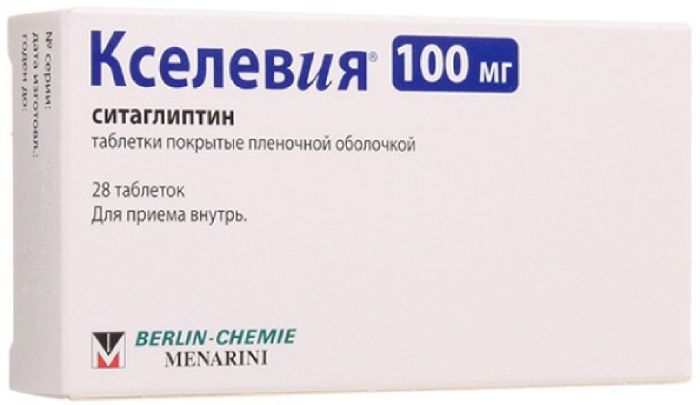
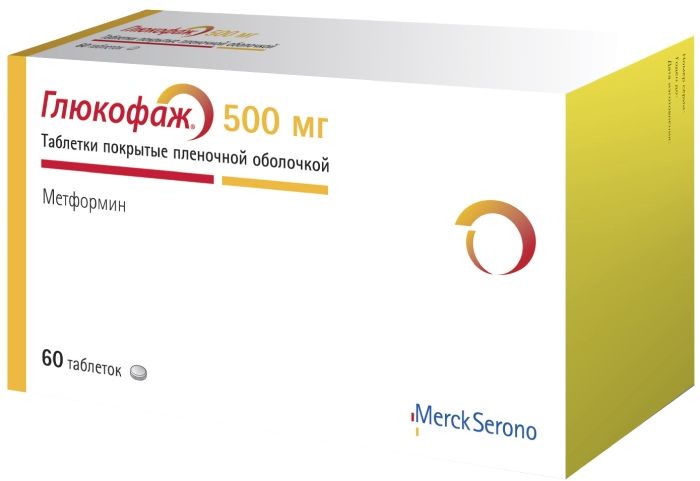
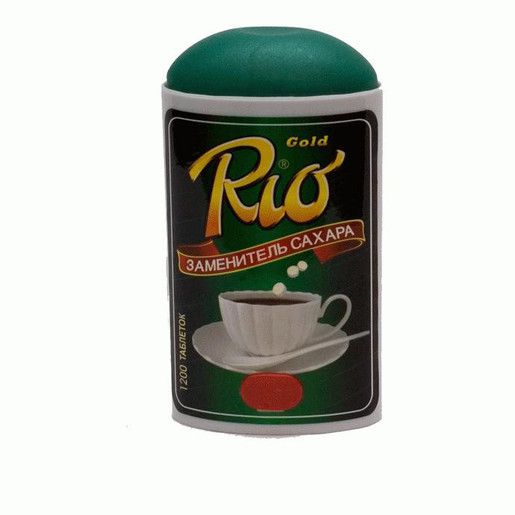
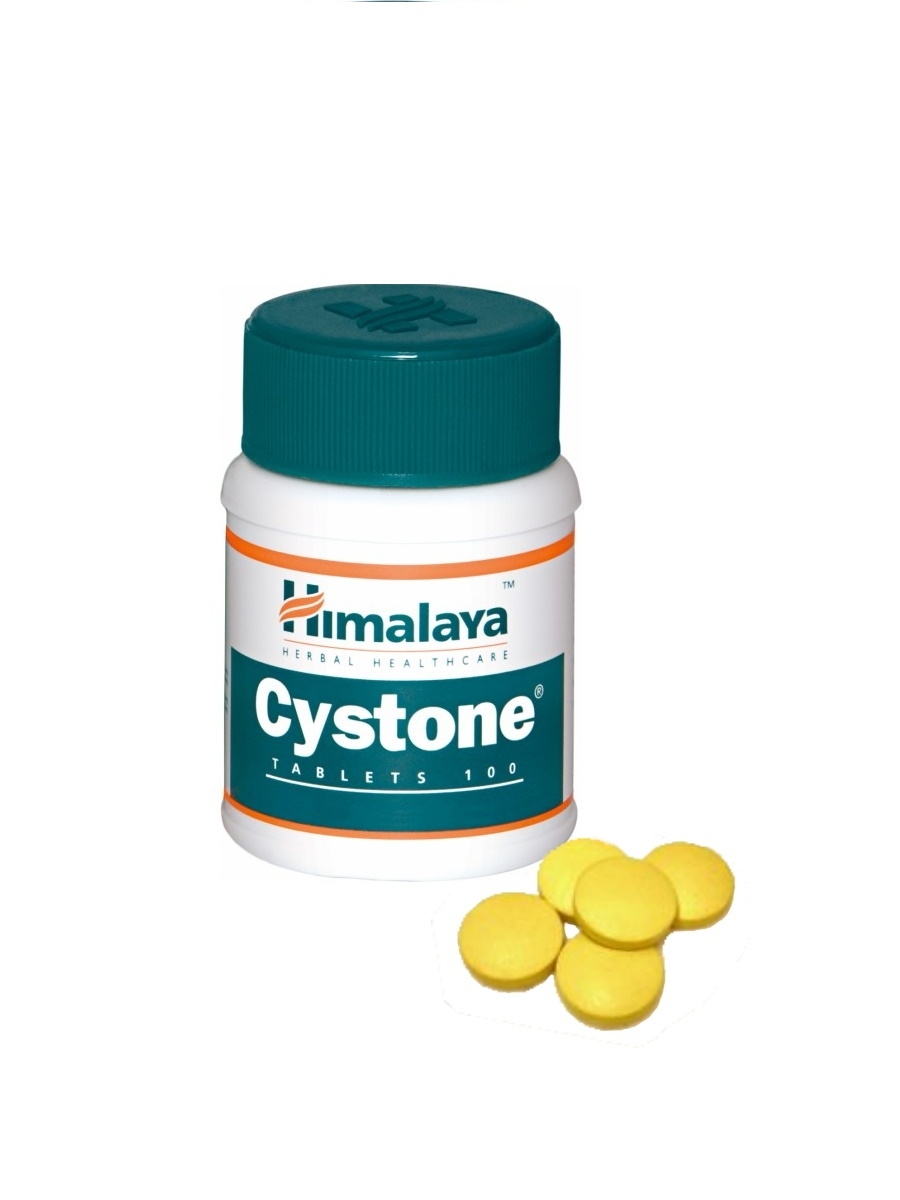
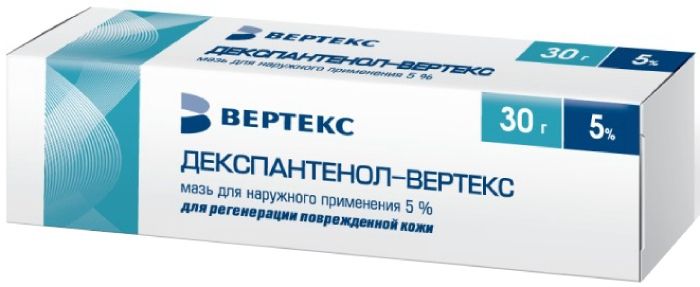
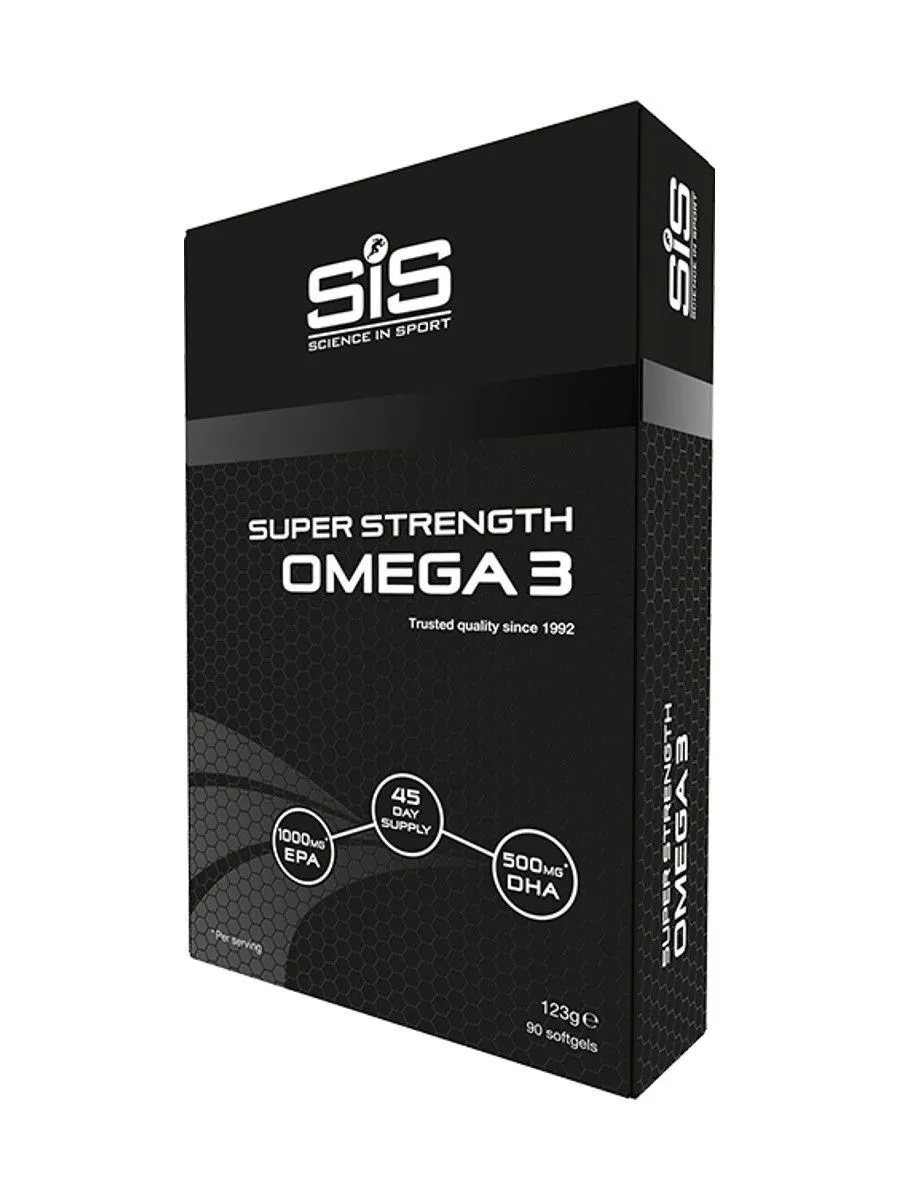
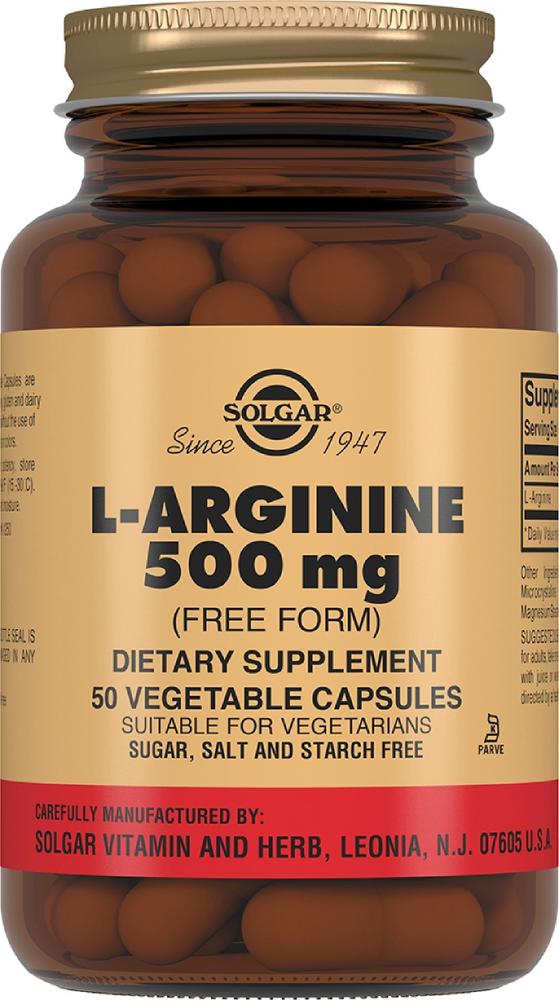
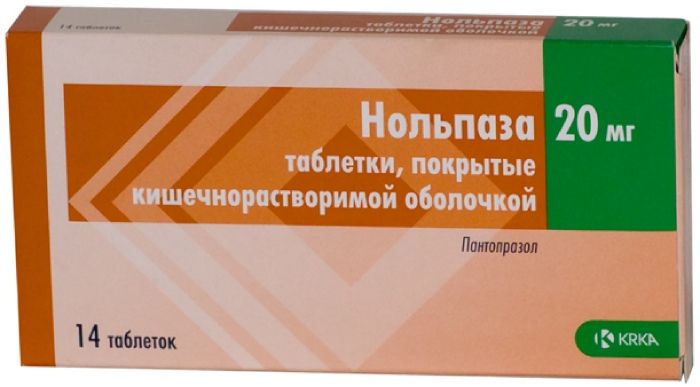
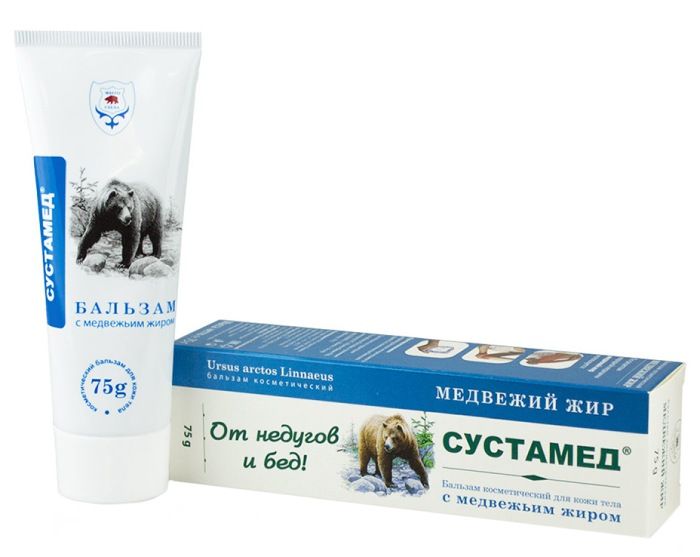




There are no reviews yet.